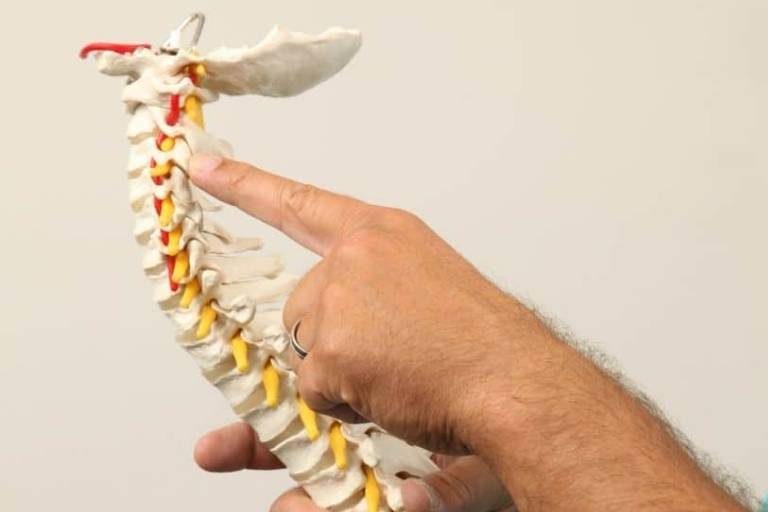As pointed out in another section of the FAQ, fully-trained Chiropractors are doctors, not therapists. This means they are fully trained in anatomy, physiology, neurology, biochemistry, spinal mechanics, pathology, all body systems and related medical fields, differential diagnosis, adjusting techniques, and physiological therapeutics. Chiropractors diagnose and treat conditions within their scope of practice, and can refer to other doctors and therapists, when necessary when conditions outside their scope arise.
“Chiropractic Therapy” is a misnomer, and implies “popping and cracking” the spine to get some temporary relief . . . methods used by non-doctors posing as qualified Chiropractors. This is important to understand because the MAIN disadvantage of “Chiropractic therapy” is the misinformation it spreads by some people about who Chiropractors are, and what they can and cannot do.
In India, for example, a lot of misinformation about Chiropractors’ ability to treat things like Ankylosing Spondylitis (AS) has come up. Some so-called doctors say they can “cure” this disease, but offer no proof in the form of X-rays or Case histories. AS is a genetic disorder that begins to fuse the pelvis and spine in early middle age, and progressively gets worse until there is no movement at all in the pelvic and spinal segments. Practically nothing can be done to stop or reverse these symptoms, and pain management is the most recommended treatment.
Chiropractors cannot cure Ankylosing Spondylitis, nor will any licensed and qualified Chiropractor pretend that he can. Other conditions such as partial paralysis, stroke, advanced osteoarthritis, and multiple pain areas arising from diabetic neuropathy may also fall into the category of “only limited care possible with Chiropractic.”
As for any disadvantages of Chiropractic itself, some legal, medical, and pharmaceutical sources in the USA will have you believe that Chiropractic adjustments to the neck “will cause a cardiovascular event or stroke.” This claim is dubious at best and based on a century-old campaign originally designed to eliminate Chiropractic as a viable alternative to drugs and surgery. See the answer to the previous question, “What are the Benefits of Chiropractic?”
It is also simply not true. In the hundreds of cases brought to US courts over the past fifty years to try and find the Chiropractor guilty of malpractice or missed treatment, only a tiny fraction of these lawsuits (1-2%) have resulted in a win. Alternatively, when cases of malpractice are brought against medical doctors in the US, about 12% on average result in some kind of judgment against the doctor or practice, and 27% lose in drug-related malpractice. Although less than 2% of medical doctors cause over 50% (!) of malpractice cases to be filed in the US, the average toll of over 250,000 deaths a year resulting from medical errors or malfeasance (according to Johns Hopkins Medicine) is a very scary statistic.
Consequently, the average cost of medical malpractice insurance has skyrocketed to $8,500 a year for general practitioners and over $50,000 a year for surgeons! Meanwhile, malpractice insurance for
Chiropractors have traditionally stayed low and have barely risen at all, currently at around $720 per year. This means that medical malpractice insurance costs a general practitioner almost TWELVE TIMES, and a surgeon more than SIXTY-NINE TIMES the amount it costs a Chiropractor for the same protection!
Insurance companies are not stupid. They know that Chiropractic is safe and that the improper use of drugs or surgery has caused great harm and death. They also know that Chiropractors win almost every malpractice case, while medical doctors do not . . . and their overall monetary losses are higher. Therefore, they price their products accordingly.
On a more realistic note, there have been times when Chiropractic care has caused more pain or discomfort, often due to the inexperience of the doctor, or by using the wrong technique needed for the condition. These instances are rare, however, and usually just cause temporary discomfort that is soon relieved by the application of ice, TNS, or other forms of therapy.
- To avoid the disadvantages listed above, make use to:
- Find and use an experienced and licensed Chiropractor
- Tell your Chiropractor about ALL underlying conditions, especially if related to potential CV disease, stroke, spinal surgery or abnormalities, and
Make sure your doctor does a complete examination and requests standing X-rays when needed.
Other than these conditions, come and enjoy your improved health!






